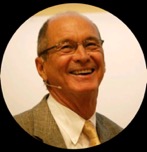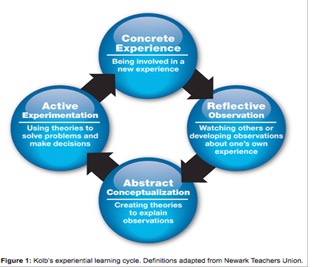EDAC 631
Adult and Community Educators
Group 2
| Group Members |
Roles |
Commented On |
| Sheri Evans
|
-Leader
-Research social background,
write introduction, edit final copy
-Research and share info.
-Develop table, write implications |
Group 1
Group 4 |
| Angie Blankenship |
-Leader
-Research social background,
write introduction, edit final copy
-Research and share info.
-Develop table, write implications |
Group 1 |
| Emily Echelberry |
-Research trends, issues, & focus, write highlights section
-Research and share info.
-Develop table, write implications |
|
| Amanda Godwin |
-Research trends, issues, & focus, write highlights section
-Research and share info.
-Develop table, write implications
|
Group 1 & 3 |
| Molly McGuire |
Research educators, programs, & organizations, write influential factors section
-Research and share info.
-Develop table, write implications |
Group 1
Group 3
Group 4 |
Introduction
The 1980s redefined the world of Adult and Community Education. The Reagan administration made adult literacy a priority during this time. Turbulent economic times led to the development of several policies, which encouraged adults to make themselves more marketable in the workplace. Although increasing literacy was important to the Reagan agenda, reducing government funding of education was also a major priority. Because of the reorganization of funds, most money went to formal institutions. This meant that adult learners interested in technical schools and other community educational institutions, had to fund most of their own learning, (Kulich, 1992).
The concept of community education began to evolve with the times. Less funding meant reduced class offerings and a “back to basics” idea of reading, writing, and arithmetic. Adult learning institutions looked for more ways to fully incorporate “community” within their educational programs. An importunate opportunity for a reciprocal relationship was realized. As more and more adults began to study and train in their communities, they gained valuable knowledge and skills to work within the same community and help strengthen the economy.

David Kolb
One important educator expanded on the reciprocal relationship between community and learner. David Kolb’s Experiential Learning Model was based on the invaluable experience offered to the community learner through internships and job-shadowing, (Healey & Jenkins, 2000). His model accepted an understanding that often the best learning doesn’t come from a teacher or book, but rather first-hand experience and observations, (Healey & Jenkins, 2000). Kolb defines this type of learning as “the process whereby knowledge is created through the transformation of experience. Knowledge results from the combinations of grasping and transforming the experience” (Cherry, 2017).
David A. Kolb is an American psychologist and educational theorist, who is best known for his theory of experiential learning as well as his learning style inventory that remains popular among educators today (Cherry, 2017).
Kolb received his PhD in Social Psychology from Harvard University, (Case Western Reserve, n.d). “He was a professor of organizational behavior and management at the MIT Sloan School of Management and at the Weatherhead School of Management, Case Western Reserve University, where he is currently Emeritus Professor of Organizational Behavior,” (Case Western Reserve, n.d.). As a psychologist he published a four stage cycle of learning, as well as a four learning styles model in 1984, (McLeod, 2017). He was largely influenced by the work of Dewey, Lewin, and Piaget, and the understanding that learning happens between an individual and their environment, (Atkinson & Murrell,1988). Besides, the influences mentioned above Kolb also acknowledges the early work on experiential learning by others in the 1900’s, including Rogers and Jung (Kohl’s Learning Styles, n.d.). A primary factor in his learning style is that each stage is influenced by the other as well as it is an influence on the other stages, (McLeod, 2017). Another important aspect of Kolb’s learning model was that the adult not merely sit and absorb the information offered by the instructor, but rather the adult should be fully emerged in it and be a part of the learning process, (Kolb & Kolb, 2005). Thus active learning would lead to a more meaningful and productive learning experience.

David Kolb’s Perspectives
https://www.youtube.com/watch?v=1ZeAdN4FB5A (In his own words)
Kolb’s Experiential Learning Cycle
David Kolb approaches the theory of adult learning in a distinctive way. His theory is that all people learn in similar four-step pattern. This pattern is used many times a day. A simple way to look at this four-step pattern is experience, reflection, conceptualize and test (figure 1). First, a person has to experience. Then, reflects on that experience, analyzing it and trying to make sense of it before attempting to fit the experience into their framework of the world. Once a person has formed a hypothesis about how things work, the person can then try it out, and experiment. This leads to another experience and a continuation of the cycle. Building upon each experience to create a greater experience (McLeod, 2017) .
https://youtu.be/ObQ2DheGOKA
https://youtu.be/aF63HHVbpQ8
Implications of David Kolb’s Work
During the 80s a bigger focus was placed on adult education in the community. Kolb’s theory explains the importance of adult students going out into the community to gain valuable learning and education during this time. In turn, Kolb’s learning styles model and experiential learning theory are today acknowledged by academics, teachers, managers and trainers as truly seminal works; fundamental concepts towards our understanding and explaining human learning behaviour, and towards helping others to learn. Kolb is currently the Chairman of Experience Based Learning Systems (EBLS), an organization that he founded in 1980 to advance research and practice on experiential learning. EBLS has developed many experiential exercises and self-assessment instruments, including the latest Kolb Learning Style Inventory 4.0, which he developed along with his wife Alice. He currently serves on the editorial review board of Simulation and Gaming where he is the experiential learning section editor. He has received four honorary degrees recognizing his contributions to experiential learning in higher education (Kolb, D., n.d.).
Kolb’s wife Alice Y. Kolb, PhD., also shares her husband’s, passion for educational research and has co-written and published a number of articles as well as a book with him entitled “ The Experiential Educator: Principles and Practices of Experiential Learning”. She was a co-developer of the Kolb Learning Style Inventory 4.0 and is the leader of a team that is developing the Educator Role Profile, an inventory designed to help educators apply experiential learning principles in their work. In 2008, the Kolbs received the “Educational Pioneers of the Year Award” from the National Society for their work in Experiential Education. (Kolb, Alice, n.d).

Allan Tuckett
Another important educator in the 1980s, also interested in the education of adults was English educator Alan Tuckett, who is credited with inventing the concept of the “adult learner”. Tuckett is a Professor of Education at the University of Wolverhampton in the UK, and also served as president of the International Council of Adult Education from 1988-2011, (Wlv.ac.uk, 2018). An important part of his philosophy is that adults learn both inside and outside of the classroom in both formal and informal settings, (Nash, 2014). After a period of economic depression and cuts to education, Tuckett used the media to harness support for the adult literacy movement in the UK, (Low, 2011). In 1981 he used a “learn as you go” philosophy to shape Clapham and Battersea, great learning institutes in the UK, (Low, 2011). His ideas helped promote the idea of the adult learner during this decade. Similar to Kolb he also promoted concept that learning happens outside of the classroom as much as it happens in the classroom. These ideas were important to this time and to the evolution of adult community learning. Tuckett, like the Reagan Administration in the United States, was also interested in increasing the literacy among adults; however his focus was on the education of adults in the UK. According to Tuckett, he was involved in starting the British adult literacy campaign in the 1970s, years prior to the idea taking off in the US.
Tuckett also has spent nearly forty (40) years of his life, not only working to educate others in the classroom, but also as a leader overseeing organizations focused on adult education and learning with an emphasis “on identifying who isn’t there and what can be done about it” (Tuckett, A., n.d.).
Alan Tucket’s Perspectives
Tuckett believes education is of the utmost importance as well as the key component when it comes to predicting future success of adults and this is accomplished through the process of lifelong learning both personally as well as professionally. “Education is first and foremost for the learner’s benefit and only secondarily for the employer’s. Without adult education, argues Tuckett, the message to those who did not do well at schools is: “If at first you don’t succeed, you won’t succeed” (Beckett, 2000 p.1).
Contributions and Impacts Made by Alan Tuckett
In the 1980’s, Alan Tuckett argued that learning can take place inside or outside classrooms, in formal or informal context, and in workplaces or voluntary associations. He helped to invent the idea of the “adult learner” (Wilby, 2014).
Tuckett became chief executive of the National Institute of Adult Continuing Education (NIACE) in 1988. When he took on the view of adult education, which was not a positive one. Adult education was viewed as boring, non-productive, economically useless. Alan worked to show others the importance of adult education.
He was a pioneer in adult literacy programs. In 1992, he started Adult Learners’ Week, an annual festival with thousands of events, adopted by Unesco and now held in 55 countries. (Wilby, 2014). The goal was to widen participation in adult learning using creative and celebratory strategies that “put the learner at the center”. Inspiration was drawn from people who demonstrated that learning makes a difference. The goals of these celebrations were to:
- help promote the range of learning possibilities,
- make these learning options relevant and accessible to learners,
- create a culture of lifelong learning,
- build a bridge between basic, vocational and general adult education (including literacy and numeracy),
- show the strong relationship between adult learning, strong democracies and productive communities and,
- create a learning society that everyone can access.
The Adult Learners’ Week is now held all over the world under the name of Festival of Learning. It is now run by NIACE’s successor organization, the Learning and Work Institute, Tuckett is disappointed at the loss of a unique adult focus: “Learning means lots of different things; Adult Learners’ Week was really the first national festival focused on adults” (Murray, 2018).
Implications of Alan Tucketts Work
Tuckett was very committed to changing society’s views of Adult Education and was passionate about revolutionizing Adult Education. Tuckett did this in numerous ways. Not only was Tuckett an educator, but he as also was activist that advocated for Adult Learners. Tuckett led and encouraged successful teach ins and encouraged institutions to challenge their government in various ways. Tuckett was passionate about teaching adult learns to advocate for themselves. Furthermore, Tuckett was known to other experts in the field as innovative, an out of the box educator. When Tuckett felt there was a need or cause for a change, he was committed to finding a way to bring it to the forefront. This is seen in various actions he led, such as the starting of Adult Learner Week, which Tuckett began in 1990’s, to celebrates, and promote adult education (Wilby, 2014 ) as well as the assistance of creating the National Organisation for Labour Students (Wildby, 2014).
Table 1: Summary of Adult Educators
|
David Kolb |
Alan Tuckett |
| Time Period |
1980’s – Present |
1970’s – Present |
| Background |
*Bachelor of Arts in psychology, philosophy and religion at Knox College
*Received Ph.D. in Social Psychology from Harvard University
*Professor of Organizational Behavior and Management.
|
*Served as president of the International Council of Adult Education from 1988-2011
*Bachelor of Arts in English and American Literature |
| Profile |
*Currently the Chairman of EBLS, which he founded to advance research and practice on experiential learning. |
*Currently a Professor of Education at the University of Wolverhampton in the UK. |
| Perspectives |
* Best learning does not come from a teacher or book, but rather first-hand experiences and observations. |
* Adults learn both inside and outside of the classroom in both formal and informal settings.
* Education is of the utmost importance as well as the key component when it comes to predicting future success of adults and this is accomplished through the process of lifelong learning both at personally as well as professionally. |
| Contributions |
*Research on experiential learning and learning styles
*Developed many experiential exercise and self-assessment instruments, including Kolb Learning Style Inventory 4.0. |
* Credited with inventing the concept of the “adult learner”.
*Started the British adult literacy campaign in the 1970s.
*Started Adult Learners Week |
References
Atkinson, G., Jr., & Murrell, P. H. (1988). Kolb’s Experiential Learning Theory: A Meta-Model for Career Exploration. Journal Of Counseling & Development, 66(8), 374.
Beckett, F. (2000, May 22). Will you still teach me when I’m 85? New Statesman, 129 (4487), 21-22.
Camden, B. (2017, December 29). Adult learning champion honoured with knighthood. FE Week, Retrieved from https://feweek.co.uk/
Case Western Reserve. (n.d.). David Kolb | Weatherhead. Retrieved fromhttps://weatherhead.case.edu/executive-education/instructors/david-kolb
Cherry. K. (2017, May 24). David Kolb Psychologist Biography. Retrieved March 3, 2018 from https://www.verywellmind/david-kolb-biography-2795505
Cherry, K. (2017, September 6). Experiential Learning Theory of David Kolb. Retrieved March 3, 2018 from https://www.verywellmind.com/experiential-learning-2795154
Healey, M., & Jenkins, A. (2000). Kolb’s Experiential Learning Theory and Its Application in Geography in Higher Education. Journal Of Geography, 99(5), 185-95.
Kolb, A. [Alice]. N.d. Posts [LinkedIn page]. Retrieved March 8, 2018 fromhttps://www.linkedin.com/in/alice-kolb-92477925/
Kolb, A. Y., & Kolb, D. A. (2005). Learning Styles and Learning Spaces: Enhancing Experiential Learning in Higher Education. Academy Of Management Learning & Education, 4(2), 193-212. doi:10.5465/AMLE.2005.17268566
Kolb, D. [David]. N.d. Posts [LinkedIn page]. Retrieved March 8, 2018 from https://www.linkedin.com/in/david-kolb-18b07519/
Kolb’s Learning Styles. (n.d.). Retrieved March 08, 2018, from https://www.businessballs.com/self-awareness//kolbs-learning-styles-64/
Kulich, J. (1992). Adult education through a rear view mirror: The changing face of adult education over the last.. Convergence, 25(4), 42.
Low, G. (2011). A Tribute to Alan Tuckett. Education Journal, (128), 33
McLeod, S. A. (2017). Kolb – Learning Styles. Retrieved from www.simplypsychology.org/learning-kolb.html
Murray, C. (2018, January 12). Sir Alan Tuckett: Former NIACE CEO, Founder of Adult Learner’s Week FE Week, Retrieved from https://feweek.co.uk
Nash, I. (2014). A guru’s collected reflections on the state of adult education. Education Journal, (210), 12-13.
Wilby, P. (2014, October 21). Alan Tuckett: the man who invented the “adult learner”. The Guardian Weekly, Retrieved from https://www.theguardian.com
Wlv.ac.uk. (2018). Alan Tuckett – University of Wolverhampton. [online] Available at: https://www.wlv.ac.uk/about-us/our-schools-and-institutes/faculty-of-education-health-and-wellbeing/staff-directory/alan-tuckett/ [Accessed 5 Mar. 2018].




You must be logged in to post a comment.